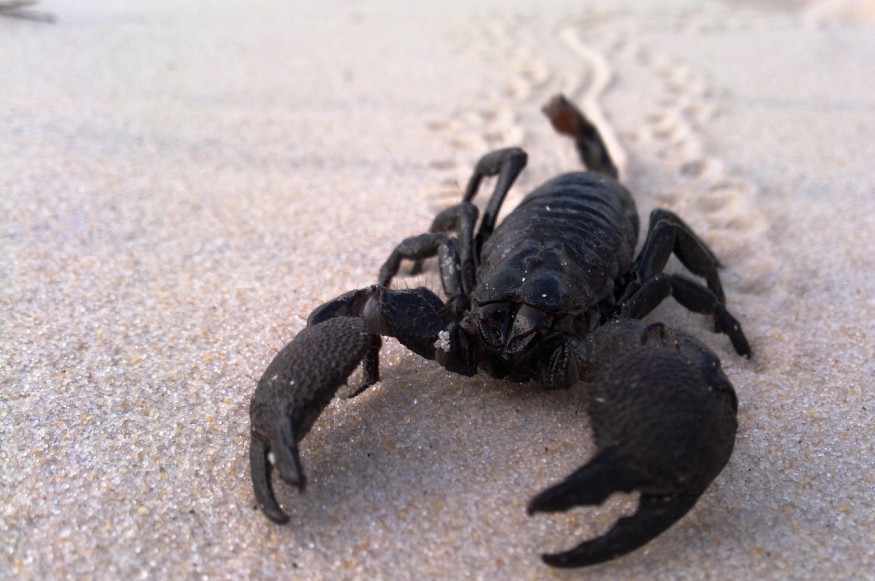Experts from the Queensland Museum have discovered new species of now-extinct sea scorpion. Using a fossil 'cold case' to identify the mysterious new sea scorpion species or eurypterids.
The newly discovered Woodwardopterus freemonorum is the first-ever fossil evidence that sea scorpions resided in Queensland, Australia.
Surprising Discovery of New Extinct Sea Scorpion Species

The sea scorpion fossil was initially discovered in the 1990s in the family property of Nick Freeman near Theodore Queensland. Researchers believe that when the species roamed the waters of the Earth, it would have been massive.
In a statement, the museum said that the new animal found in Theodore was a massive monstrosity, most likely reaching a meter in length and living in freshwater rivers and lakes in the Theodore area, reports 9News.
When alerted of the discovery, the paleontology team of the museum was baffled and weren't entirely sure which group of animal the fossils belonged to hence making it a 'cold case' for experts.
Dr. Andrew Rozefelds, the Queensland Museum Principal Curator of Geosciences, spent much of the COVID-19 closures to revisit various fossil cold cases with the now-extinct sea scorpion's fossil as his subject.
Dr. Rozefelds explains that it was initially lumped as a 'Too-Hard Basket'; however, the closures provided him with the opportunity to examine and assess some of the fossil collections in the museum, with the sea scorpion's intriguing him the most.
He adds that from the initial research, he concluded that the fossil belonged to an arthropod of some sort. The occurrence and ornamentation of the fossil resemble those of the eurypterids.
By collaborating with his colleague, Dr. Rozefelds and Dr. Markus Poschmann in Germany, they determined what species the 'cold case' fossil specimen from Theodore was.
Dr. Rozefelds explains that utilizing published dates for volcanic sediments preserved in the coal of the fossil measuring the Theodore sea scorpion accurately as possible. Dating back the specimen to roughly 252 million years in the past. And after extensive research on the fossil, the team discovered that it belonged to the last eurypterid known from anywhere on the planet. This places the fossil just before the end-Permian extinction event. The group of eurypterids disappeared from the planet along with various groups of animals during the time. The extinct sea scorpion species would have been one of the largest predators in Theodore lakes and rivers.
ALSO READ : Crocodile-Like Beast That Roamed In Tanzania 240 Million Years Ago Discovered, Gets New Name
Eurypterids; The Giant Prehistoric Sea Scorpions
According to the Yale Peabody Museum, Eurypterids or sea scorpions are a group of extinct chelicerates or arthropods closely related to spiders, scorpions, horseshoe crabs mites, and ticks of today. Commonly found in rocks of the Silurian age, these animals thrived across the planet for more than 200 million years until their inevitable disappearance 250 million years ago at the end of the Permian.
Sea scorpions are also the only eurypterids that can swim across vast open oceans. With the pterygotid eurypterids, the largest arthropods, reaching lengths of more than eight feet.
RELATED ARTICLE : 33ft-Long New Species of Dinosaur that Looked Like A Crocodile and Constantly Grew Teeth Discovered in Portugal
Check out more news and information on Paleontology in Science Times.












